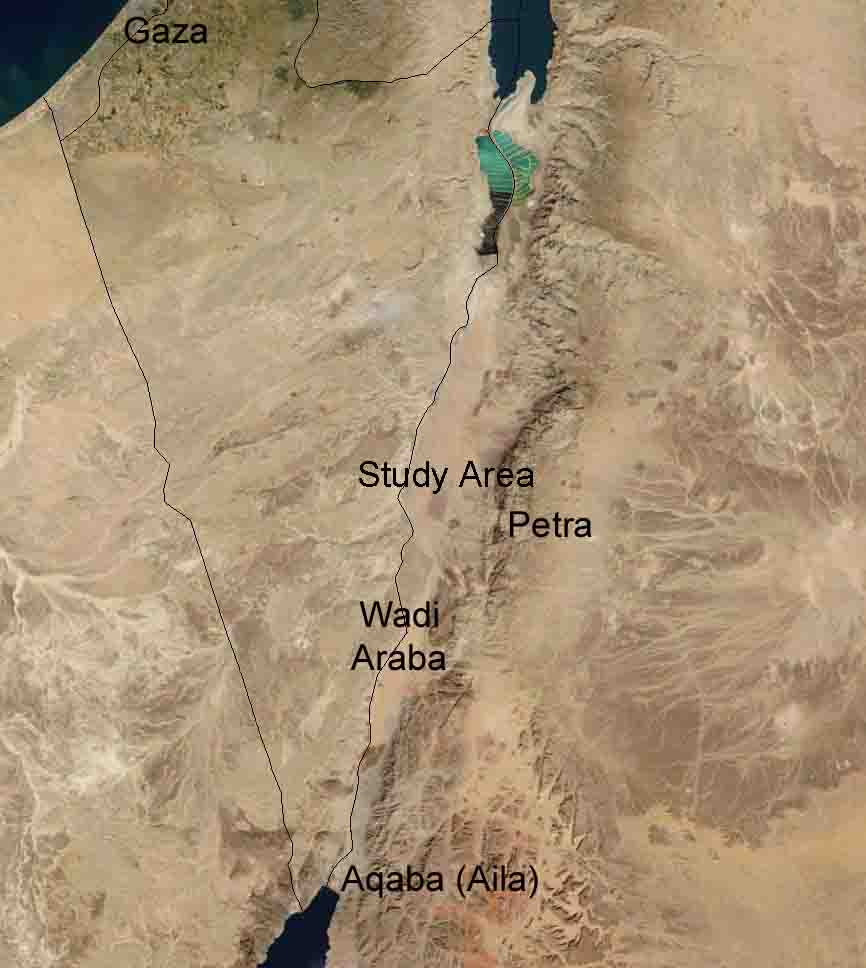

Dr. Andrew M. Smith II, Director
The
Much of
Wadi Araba remains terra incognita, which is especially true for the east-central sector
of the valley (see fig.). Accordingly, in
1997, as a feasibility study for the Bir Madhkur Project, the author, Dr. Andrew M. Smith
II, conducted a reconnaissance survey of unexplored regions of the central Wadi Araba. The reconnaissance served to evaluate the nature of
the archaeological remains present in the central Araba and to learn more about the
natural environment. The objective was to
gather sufficient data to design a workable methodology governing future, more intensive
fieldwork. Also, while conducting the
reconnaissance survey, ten archaeological sites were documented in the immediate vicinity
of Bir Madhkur.
Following the 1997 reconnaissance, the author initiated the Central Araba Archaeological Survey in order 1) to contextualize the archaeological landscape surrounding Bir Madhkur itself as well as 2) to fill the gap left between archaeological surveys in the north (down to the Feinan area) and those in the south (the Roman Aqaba Project’s Southeast Araba Archaeological Survey). The study area for the Central Araba Archaeological Survey is expansive. The northern survey limit lies just to the south of Wadi Fidan at Wadi Hamdan and Jebel el-Malaqa, roughly 20 km from Bir Madhkur. Survey coverage to the south terminates at Wadi Huwwar, roughly 20 km distant, which is near Wadi Abu Barqa and the northern limit of survey set by the Southeast Araba Archaeological Survey. The western survey limit is conveniently defined by the modern Araba highway, although, when permitted, coverage extends farther westward near to the Jordanian-Israeli border. To the east, within the foothills of the esh-Shera range, coverage extends several kilometers, with limits generally set by the local topography.
The last field season of the Central Araba Archaeological Survey was in 2003 and the next season will be in 2006 (Smith 2005). Many significant discoveries have been made to date, which include the discovery of numerous farm houses of the Late Roman period, which will help to contextualize the extensive evidence of agricultural activity in the area, in addition to the discovery of several new caravan stations.
For those interested in the joining the project, or for more information, contact Dr. Andrew M. Smith II.
copyright ©1996 Wadi Araba Archaeological Research Project
Most recent update: 7/10/07
For more information contact amsii@hotmail.com